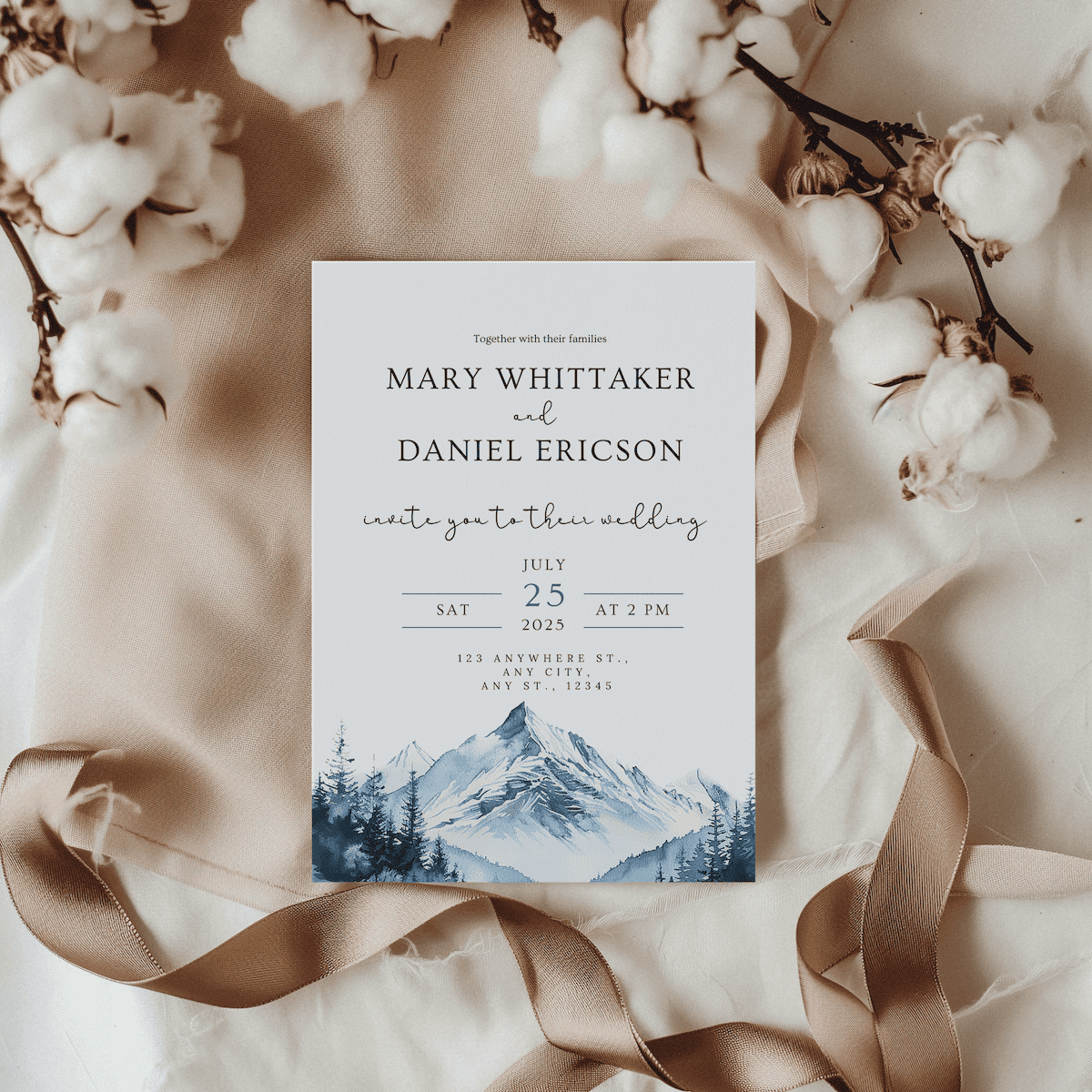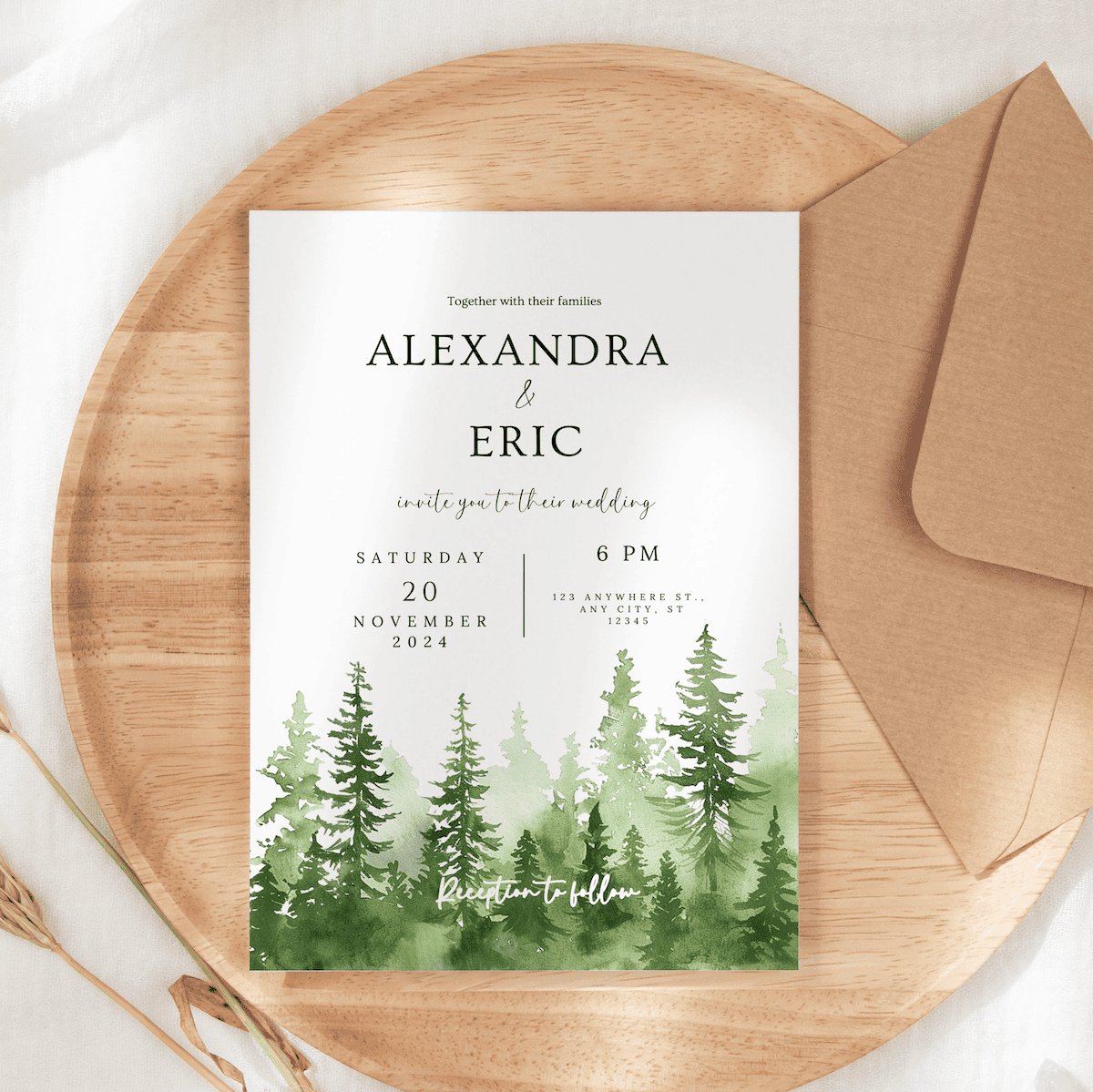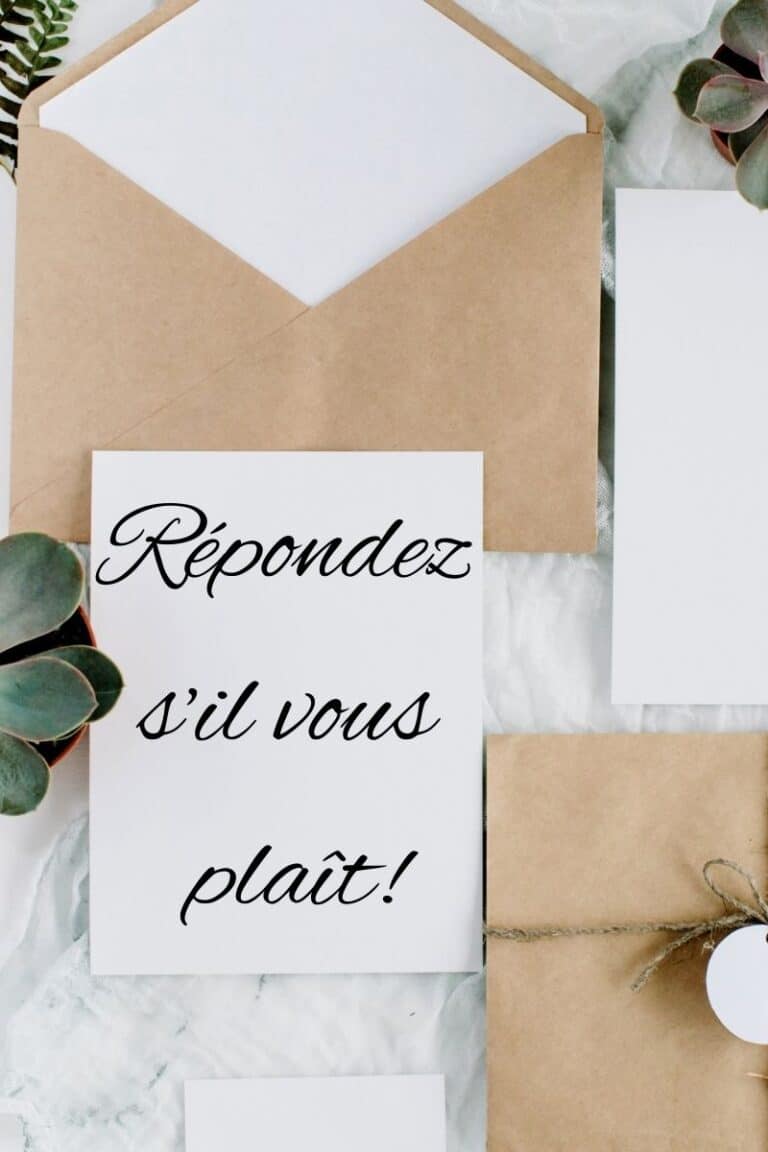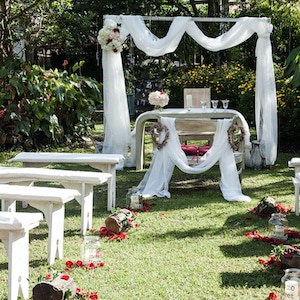Wedding Invitation Wording
Regarding wedding invitations, the wording is just as important as the design. It’s an announcement of love and a request for your loved ones’ presence on your big day. It’s also a glimpse into the style and tone of your wedding celebration, whether that be a traditional, formal black tie affair, a casual beachside gathering, or an intimate destination wedding.

The Structure of a Wedding Invitation
Wedding invitations traditionally follow a specific format. Here’s the typical breakdown of one:
- Host Line: This is where you mention the host(s) of the wedding. Traditionally, this has been the bride’s parents, but modern couples often host their own weddings or include both sets of parents.
- Request Line: Here, you formally invite your guests to the wedding.
- Bride and Groom Line: The names of the couple getting married.
- Date and Time Line: The wedding date and time.
- Location Line: The venue of the ceremony.
- Reception Information: Details about the post-ceremony celebrations.
- RSVP Line: Instructions on how to reply to the invitation.
Now that we’ve broken down the structure let’s get into the details.
Host Line
Your host line will vary depending on who is hosting the event.
- If it’s the bride’s parents: “Mr. and Mrs. Johnson request the honor of your presence…”
- Both sets of parents: “Mr. and Mrs. Johnson and Mr. and Mrs. Smith request the honor of your presence…”
- The couple is hosting: “Together with their families, Anna Johnson and Peter Smith invite you to their wedding…”
Request Line
The request line is where you formally invite your guests. The wording here can range from traditional phrases to more modern, casual ones.
- For a church wedding: “request the honor of your presence…”
- For a non-religious or informal venue: “request the pleasure of your company…”
Bride and Groom Line
The names of the bride and groom should be at the center of the invitation. Traditionally, the bride’s name comes first. For same-sex couples, you can go alphabetically or in any order you prefer.
Date and Time Line
The date and time should be written in full, and numerals should typically be avoided. For instance, “Saturday, the fifth of June, two thousand twenty-three, at half after four in the afternoon.”
Location Line
For both the ceremony and evening reception, it’s crucial to include the wedding venue’s name and address. This is especially important if you have a destination wedding or if the ceremony and reception are at separate venues. If your ceremony is in a house of worship, etiquette suggests using “request the honor of your presence,” while “request the pleasure of your company” is suitable for a civil ceremony or a less formal location.
Reception Information
If your reception is at a different location, you should include that information and the start time.
RSVP Line
In the age of digital communications, many couples are now opting to have guests RSVP via their wedding website. However, traditional mail-in RSVPs are still quite common. Ensure you make it clear how you want guests to respond.

Additional Tips for Wedding Invitation Wording
- Keep It Clear: While beautiful language is appreciated, clarity is paramount. Ensure that the invitation wording is straightforward and easy to understand.
- Mind Your Tone: Your invitation’s tone should match your wedding’s formality and style. A black-tie affair might call for more formal language, while a beach wedding might warrant something more casual and playful.
- Include a Deadline for RSVPs: This is crucial for finalizing your guest list and catering order.
- Include Your Wedding Website: If you have a wedding website, include it on your invitation. This is a great place to share additional information, such as registry details, accommodation recommendations, etc.
- Dress code: Your guests will appreciate knowing the wedding dress code for your wedding day. If it’s a black-tie event, mention this on your invite. For a more casual wedding, terms like “casual attire” or “cocktail attire” are helpful indicators. This can be included on the main invitation or on a separate insert card.
Last Names and Middle Names: Etiquette Rules and Personal Preference
Including last names and middle names is a detail that depends on the formality of the wedding and personal preference. In traditional wedding invitation wording, the bride and groom’s full names, including middle names, are used. If parents are hosts of the wedding, the bride’s and groom’s parents’ names would be included too, usually on separate lines. It might read, “Mr. and Mrs. Johnson request the pleasure of your company at the marriage of their daughter, Anna Marie, to Mr. Peter Thomas Smith, son of Mr. and Mrs. Smith.”
However, for more casual invitations, it’s perfectly acceptable to use first names only, or first and last names without middle names. In fact, for very informal weddings, the invitation might simply read, “Join us for the wedding of Anna and Peter.”
Including deceased parents in wedding invitations
This can be a sensitive subject. If a parent is no longer here, they aren’t able to host your wedding, but you might still want their name on the invitation.
Adding the word late in front of their name is a way to show that they are no longer here in the world, but you still honor them on the invite.
Wedding invite with the name of a deceased parent
James Michael, son of Lara Roads and the late Jeffrey Roads
& Sarah Michelle, daughter of Maxwell Jenkins and Tamara Jenkins
request the honor of your presence
at their marriage
Saturday the sixteenth of January
two thousand twenty-three at two o’clock in the afternoon
Final thoughts
Crafting the wording of your wedding invitation is one of the first things you’ll do in the journey of planning your own wedding. Remember, there’s no right or wrong way to word your wedding invitations.
Whether you follow traditional etiquette rules or make up your own, the goal is to provide your wedding guests with the information they need and to invite them into the joy of your special day. After all, the wedding celebration is about your love story and the unique journey that has brought you to this beautiful moment.
And while you’re writing your invites, take care not to make these common wedding invitation mistakes!






